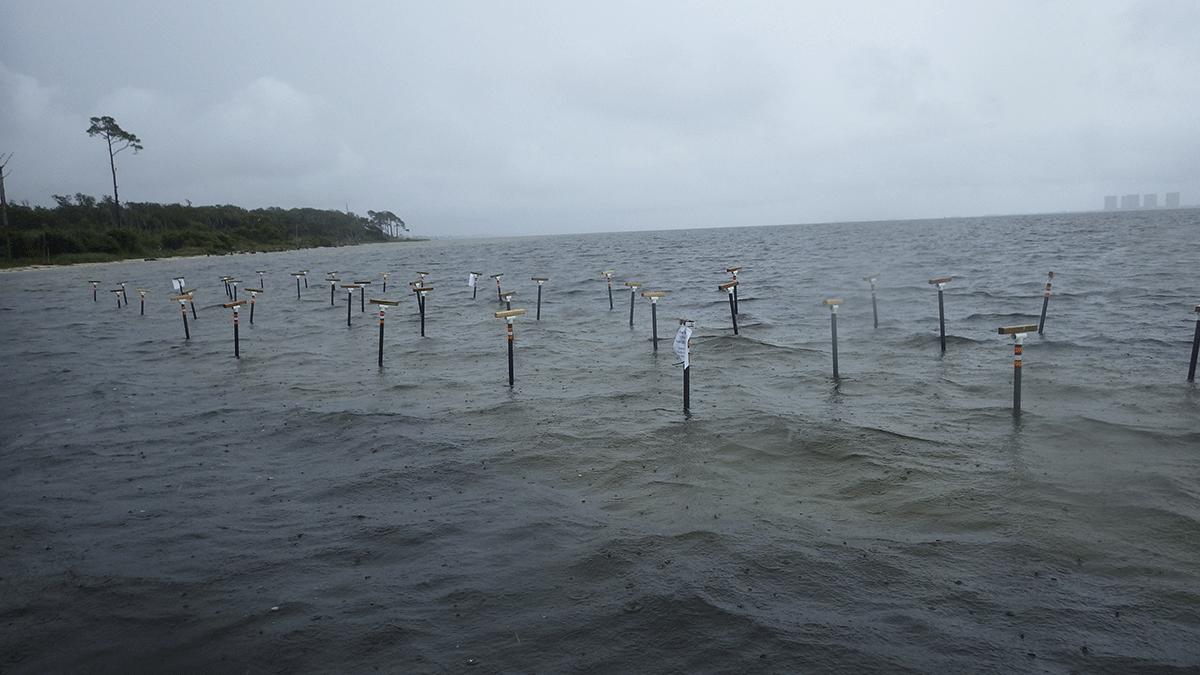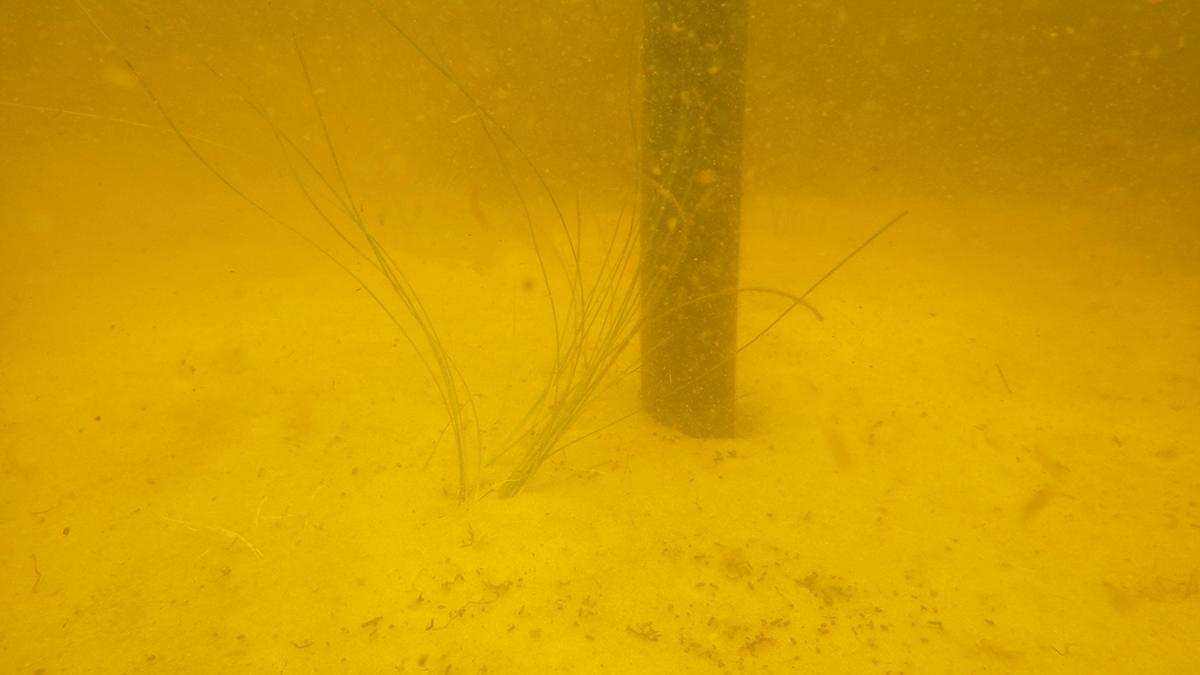
Seagrass restoration at Naval Live Oaks is underway. Dr. Ken Heck's lab at the Dauphin Island Sea Lab received a grant late last year from the National Park Service to restore seagrass injured by the oil spill response efforts.
Seagrasses are a submerged vegetation that is vital to the health of the estuary. The seagrass provides food for manatees, green sea turtles, and herbivorous fishes such as parrotfish. It’s also a nursery for marine animals such as speckled trout, red drum, and blue crabs.

In an effort to restore seagrasses damaged by propellers and foot traffic, Dr. Heck's team transplanted shoal grass in the damaged area in late June. Interns of Dr. John Valentine's lab assisted in the restoration work.
University Programs summer faculty members Dr. Brittany Blomberg and Dr. Lesley Baggett used the restoration work as a teaching tool during summer session courses.
Heck Lab manager Dottie Byron said the team will assess the transplant within the coming week, and will monitor the restoration site through next year.